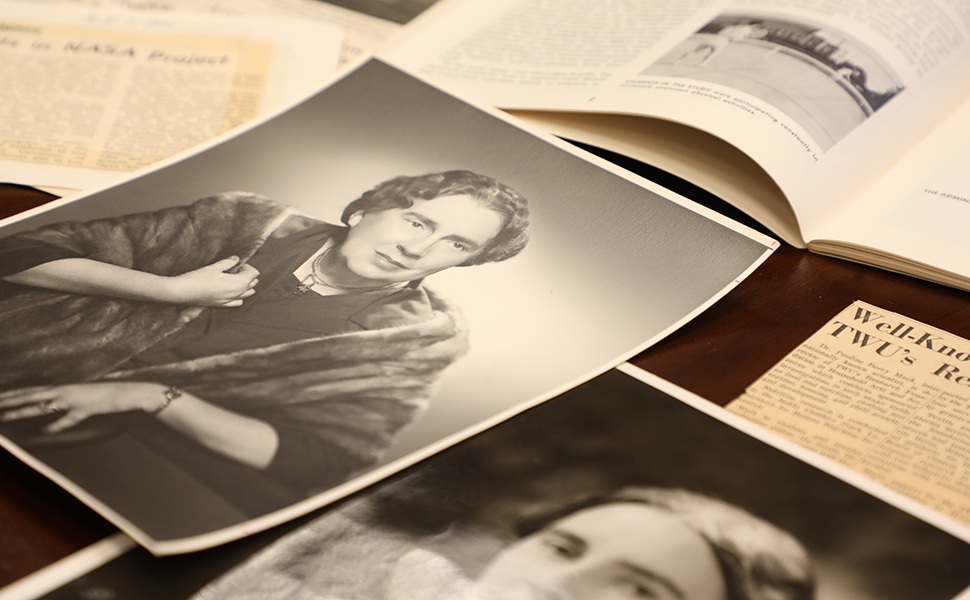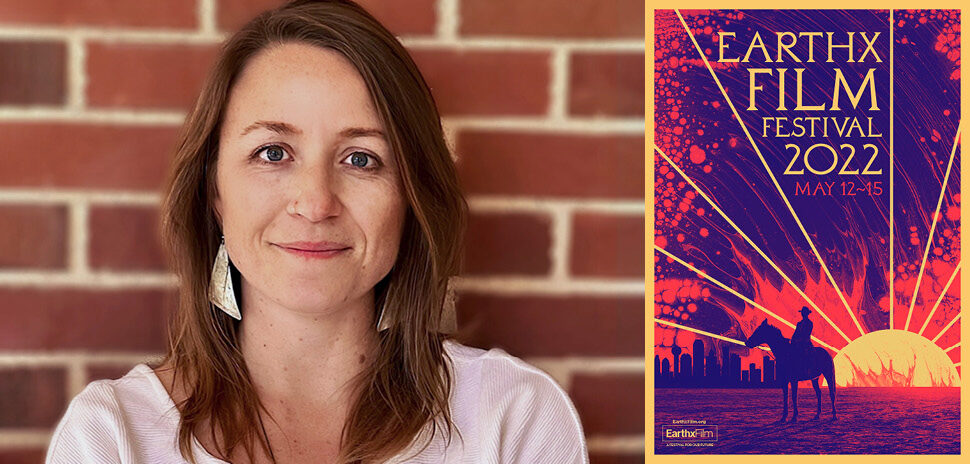![]() Every week, we do a little research of our own. We’re looking for scientists, professors, engineers, entrepreneurs—anybody, really—engaging in research and development across North Texas.
Every week, we do a little research of our own. We’re looking for scientists, professors, engineers, entrepreneurs—anybody, really—engaging in research and development across North Texas.
There’s plenty of good work being done. If you want to put R&D under your microscope, sign up for our e-newsletter.
Festival taps documentary on TWU researcher’s lasting work
A film co-produced by Texas Woman’s University in Denton about a groundbreaking space health researcher has been selected as an entry for the 25th Annual SAFILM-San Antonio Film Festival.
The short documentary film “Mack Minded: Humanly Possible,” tells the story of female TWU scientist Pauline Beery Mack, Ph.D., who performed groundbreaking research for NASA throughout the 1960s. She was the dean and director of TWU’s Research Institute from 1952 through 1973.
READ NEXT UTA Fires Up Heat Shield Research with New Hypersonic Wind Tunnel
The film, which is a joint production of Denton-based Curious Dog Creative and Texas Woman’s University, was selected from hundreds of submissions, according to the festival organizers.
“Mack Minded: Humanly Possible” details Mack’s research on bone density and the effects of space travel on the body. Mack conduct this research when there were few women in the field of science, according to TWU. The film’s director, Susan Carol Davis, cites the 50th anniversary of the Apollo II moon mission as the inspiration that sparked interest in telling Mack’s story.
“Her bone density studies shed light on the very human element of Neil Armstrong’s first steps on the moon,” Davis said in a statement.
Mack continued her bone density studies until she died in 1974. Her research is housed in TWU’s Blagg-Huey Library. The collection contains a stack of X-rays of the hands and feet of nine early U.S. astronauts.
“As NASA gets closer and closer to manned flights to Mars, the life’s work of Dr. Mack continues to play a role in space exploration, even decades after her death,” Davis said. “Yet, her story and her contribution to space travel as we know it remained to be told—until now.”
Davis led an all-female crew in making the film, which features Mack’s former research assistants as well as TWU faculty who are involved in projects sponsored by the Texas Space Grant Consortium.
“Mack Minded: Humanly Possible” will be screened at the Tobin Center for the Performing Arts at 11 a.m., Saturday, Aug. 3, in the Feik Family Rotunda as part of the Lone Star Shorts Block.
UNTHSC prof helps lead efforts to stem U.S. opioid deaths
A professor at the University of North Texas Health Science Center in Fort Worth has been named chair of the steering committee of what is being called an aggressive, trans-agency effort to hasten scientific solutions that could stem the U.S. opioid crisis.
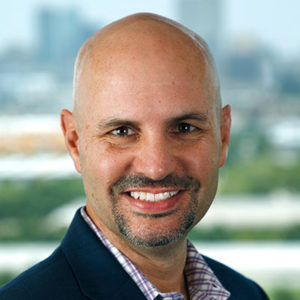
Scott Walters [Photo: Courtesy UNTHSC]
Scott Walters, Ph.D., is Regents Professor and Chair of Health Behavior and Health Systems at the UNT Health Science Center School of Public Health.
More than $350 million in funding will back the multiyear HEALing Communities Study, which is part of the NIH HEAL (Helping to End Addiction Long-Term) Initiative, according to a statement.
Researchers at four independent facilities—Boston Medical Center, Columbia University in New York, Ohio State University, and the University of Kentucky—will build on existing NIH research to implement, test, and evaluate a set of proven prevention and treatment strategies for opioid overdose, recovery, and support.
“My role as Steering Committee Chair will be like that of a stage manager, to keep track of all aspects of the project and make sure people have what they need to keep things moving,” Walters said in the statement. “What makes this project unique is the scope of the problem we’re addressing and the way it brings solutions together across different channels, including healthcare, behavioral health, the justice system, and other community-based settings.”
The study will track a multitude of possible outcomes including drug fatalities, medication access, prescribing patterns, and treatment initiation.
The goal is to lower the number of opioid deaths by at least 40 percent over a three-year period in nearly 70 communities that have been hit hard by the opioid crisis across Kentucky, Massachusetts, New York, and Ohio.
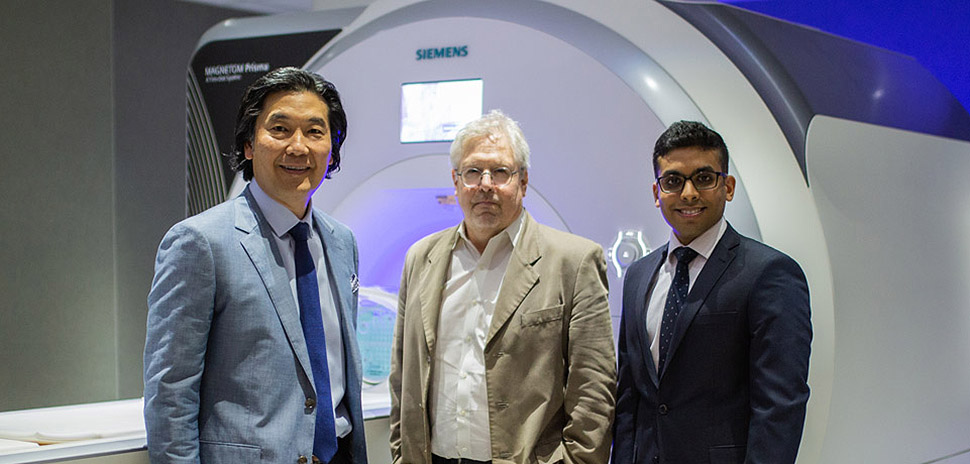
Drs. Darin T. Okuda of UT Southwestern Medical Center, Bart Rypma, professor of psychology at UT Dallas, and Dinesh Sivakolundu, a doctoral student at UT Dallas, used an MRI technique to study images of brain lesions in multiple sclerosis patients. [Photo: Courtesy UTD]
UTD, UTSW scientists using 3D images of brain lesions to improve MS therapies
Researchers from the University of Dallas’ Center for BrainHealth and UT Southwestern Medical Center hope their work, which is using 3D images of multiple sclerosis lesions on the brain, will lead to the best therapy for each patient.
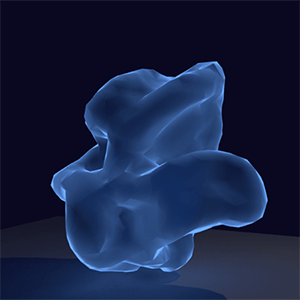
An MS brain lesion is shown in 3D. [Photo: Courtesy UTD]
The researchers’ work aimed at learning to differentiate between injuries that are likely to heal versus those that are not. The team published its work online May 30 in the Journal of Neuroimaging.
They examined 109 brain lesions—which are abnormalities that can be seen on brain-imaging tests—from 23 MS patients using a patent-pending technique that employs 3 Tesla MRI.
“Studying a lesion and the tissue surrounding it in three dimensions is a novel approach,” Dinesh Sivakolundu, the lead author of the study and a Ph.D. student in the Department of Biological Sciences at UT Dallas, said in a statement. “This has allowed us to compile a list of defining characteristics of MS lesions, including cerebral blood flow, metabolic rate of oxygen, and their shape and texture.”
By understanding each detail’s significance and having dependable images of the area, researchers noted that the prospects of choosing the appropriate therapy for individual patients are improved, according to Sivakolundu.
![]()
Get on the list.
Dallas Innovates, every day.
Sign up to keep your eye on what’s new and next in Dallas-Fort Worth, every day.










